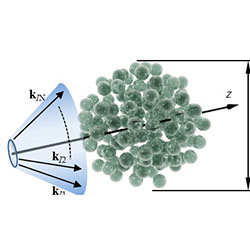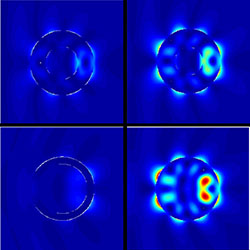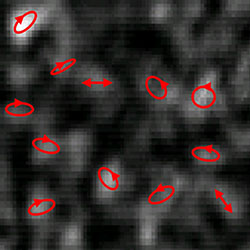 Home > Research > Optics of Complex Media
Home > Research > Optics of Complex Media

Mesoscopic optics
At photonic mesoscales, fascinating interaction and confinement phenomena occur across different scales in both time and space. At such dimensions, photonic phenomena include scale-specific modifications of the structure in response to the light so that a passive linear interpretation of the reciprocal action is inadequate, and a nonlinear description including dynamics of the light-structure interaction is necessary. Our research demonstrates that the effective light-matter interaction can be conveniently tuned to emulate phenomenology impossible to probe at atomic scales.

Photonic structures
The propagation of optical fields propagate is usually controlled by optical elements like mirrors, prisms, lenses, etc. that operate based on reflection, refraction or diffraction. Our research, however, demonstrates that efficient control of light propagation can also be achieved by directional scattering off all-dielectric heterogeneous structures. The structural design of wavelength-size spherical particles or large-scale photonic structures, allows controlling the scattering properties and permits implementing different photon transport regimes.

Statistical optics
The interaction of light with heterogeneous materials produces significant fluctuations of optical fields. Their explicit characterization require statistical optics approaches that go beyond the common Gaussian approximations. We are developing tools for characterizing the coherence and polarization of both two- and three-dimensional electromagnetic fields. Our group examines and makes use of these concepts for sensing, optical metrology, diagnostics, and various applications of optical wave propagation in random media.